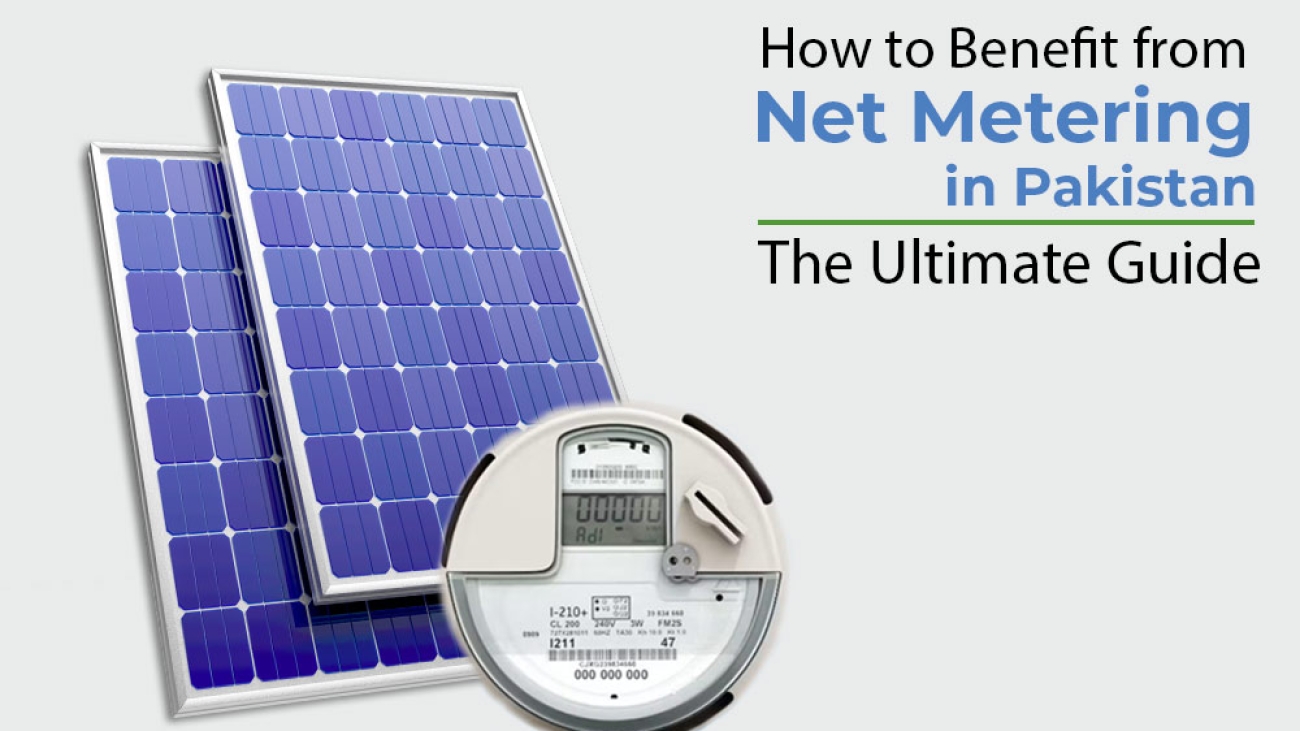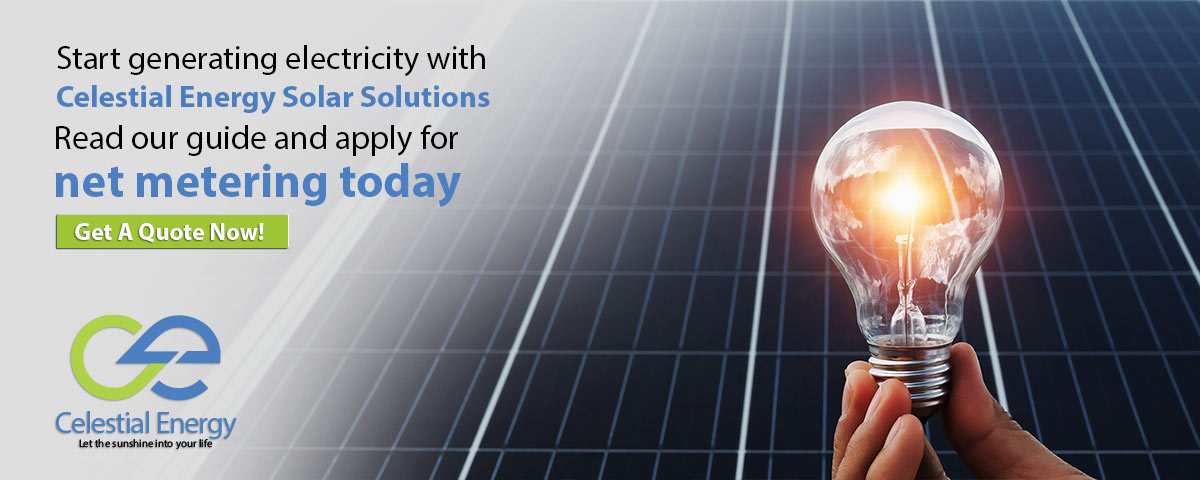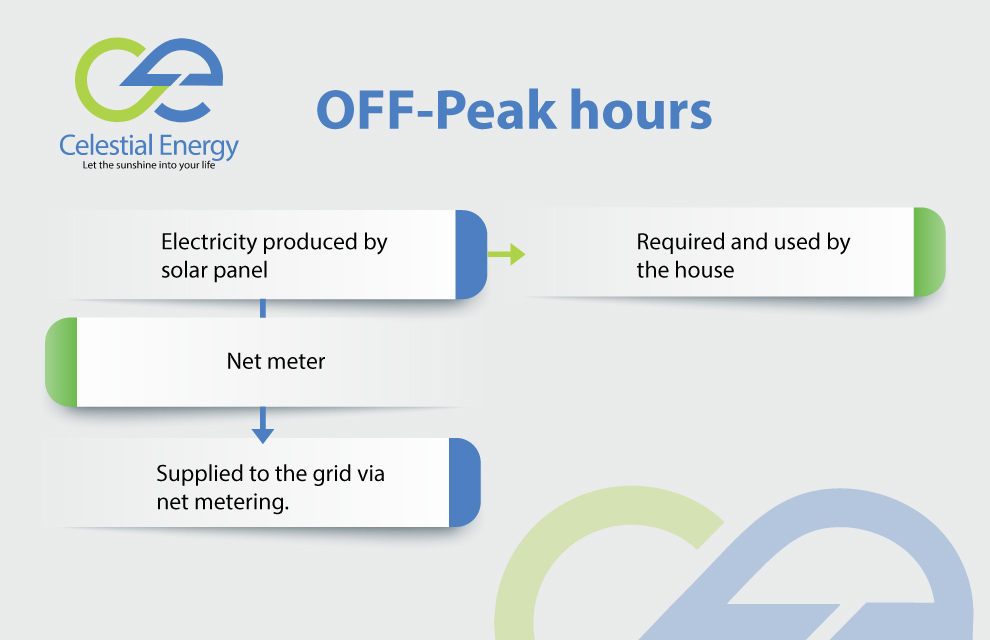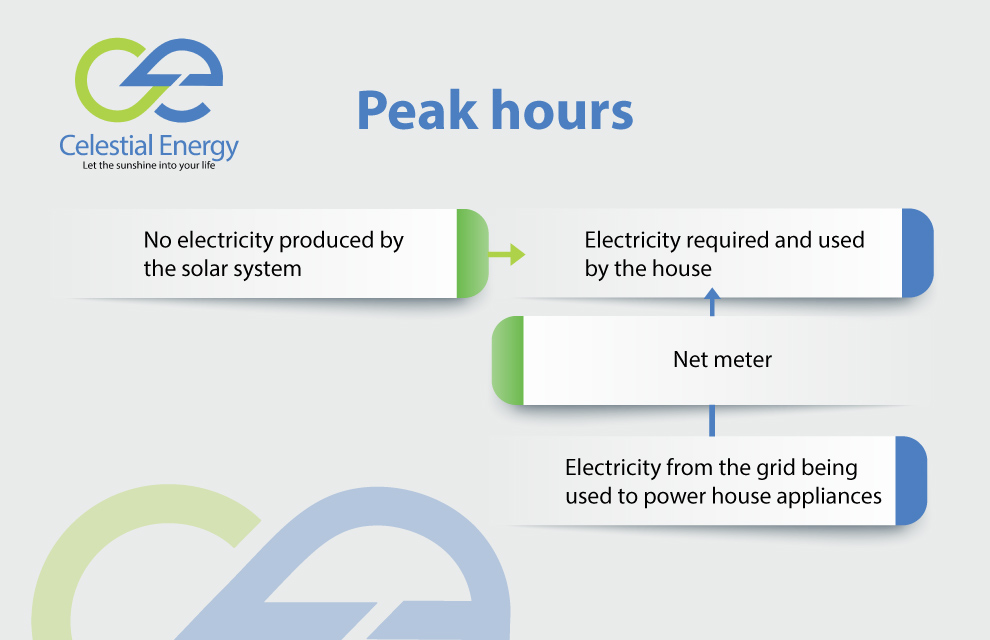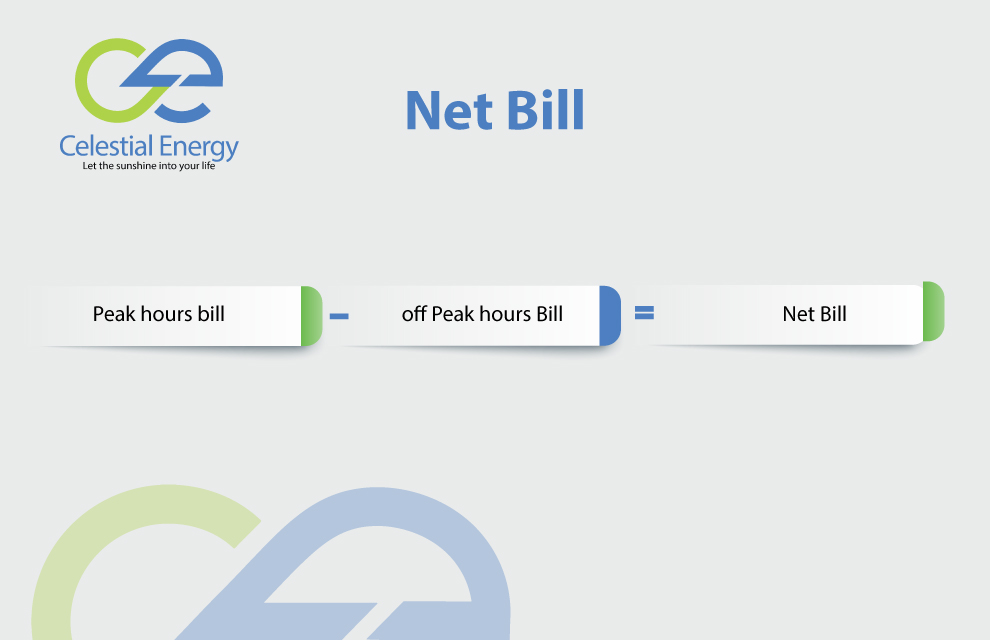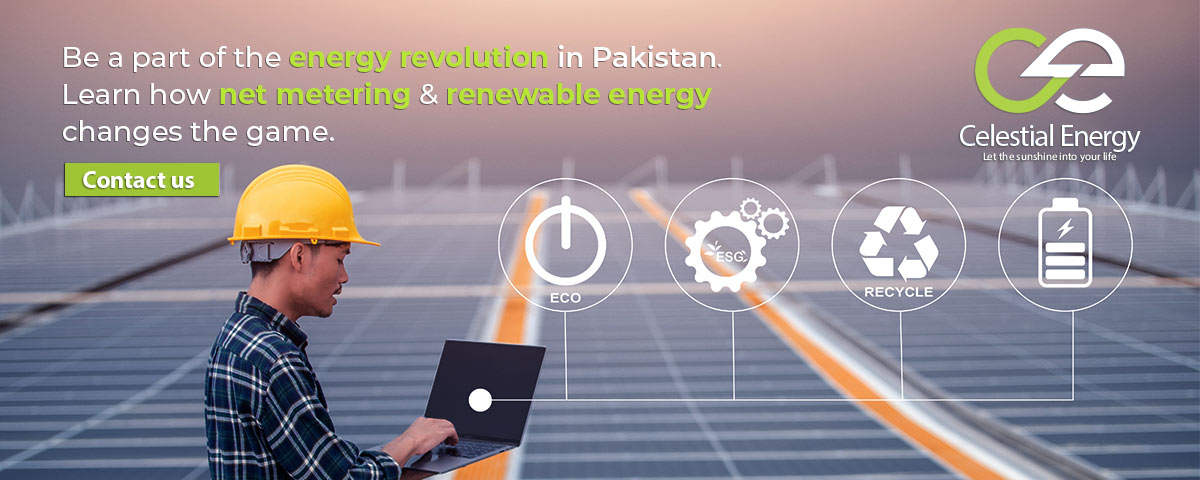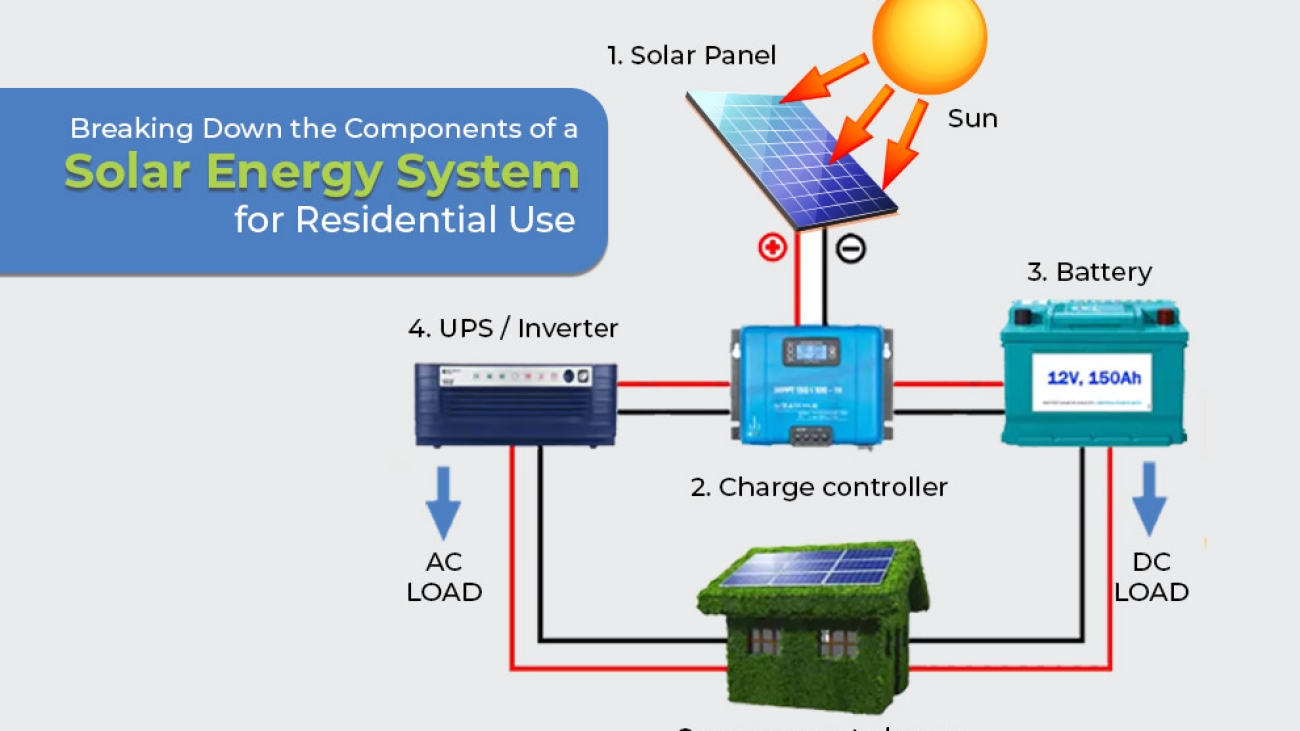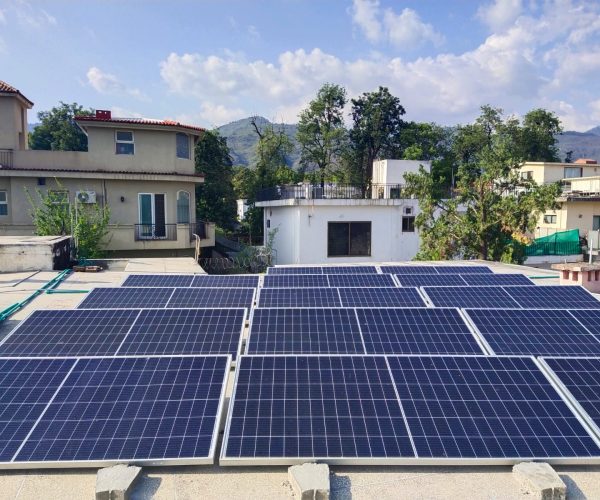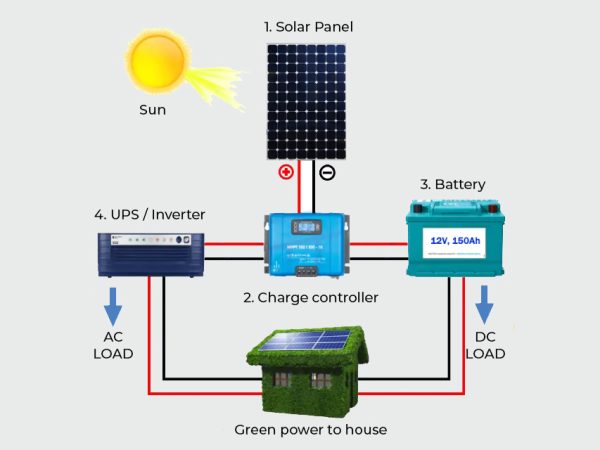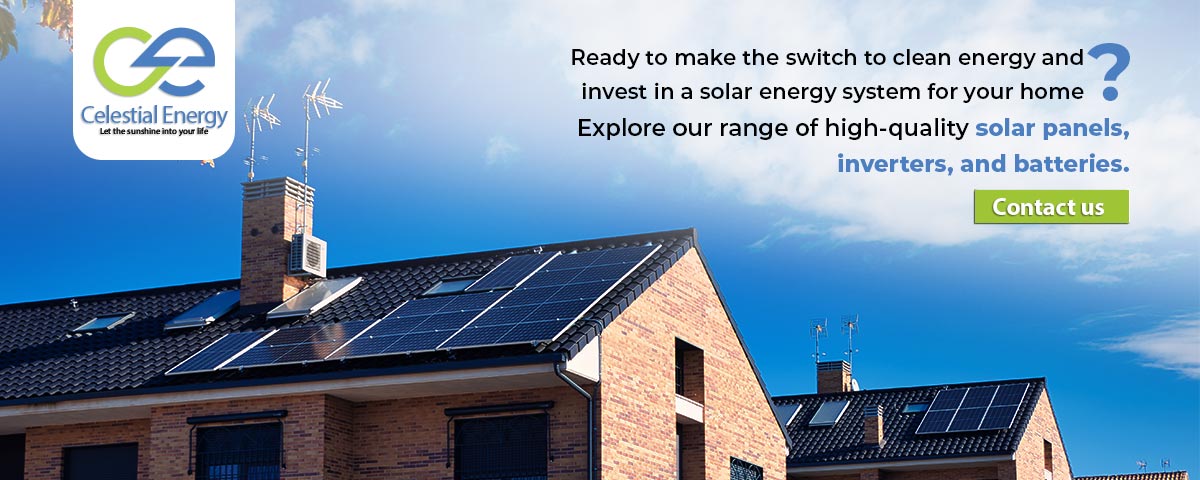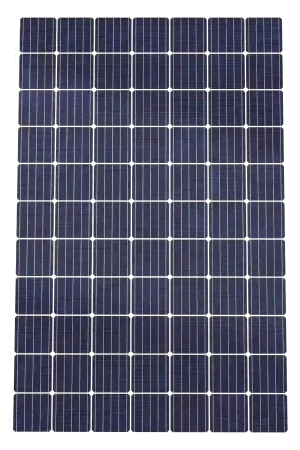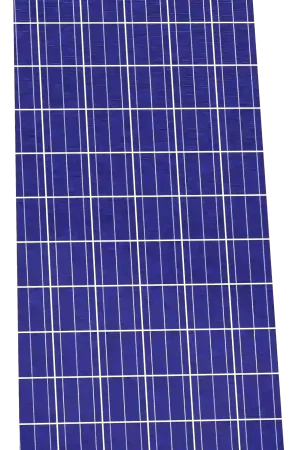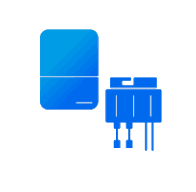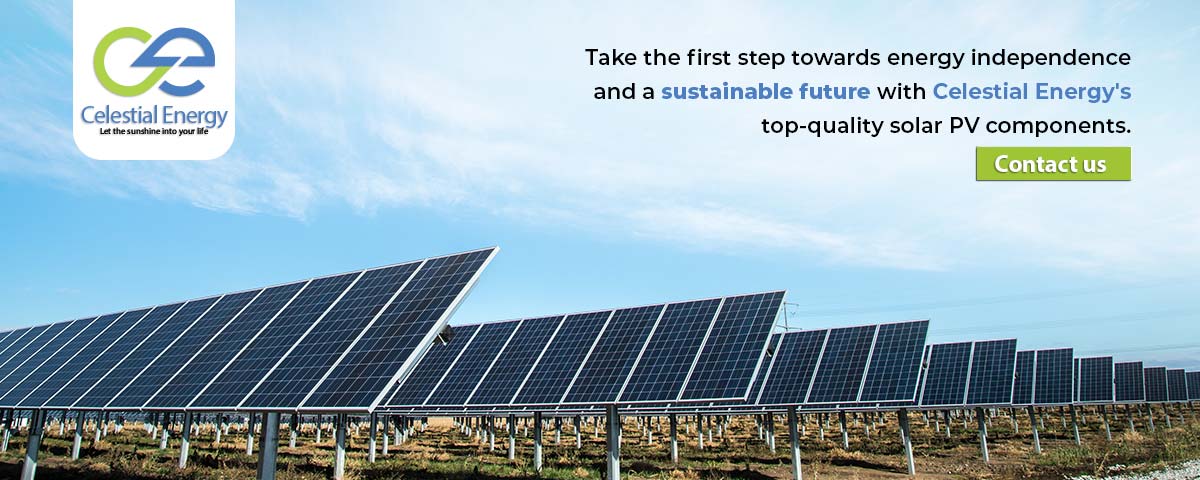Net metering is a billing process that compensates owners of solar energy systems for the surplus electricity they supply to the grid. The system works by using a two-way meter that measures the amount of electricity a customer uses from the grid, as well as the amount of excess electricity their solar panels generate and send back to the grid. The customer is then billed only for the net amount of electricity they consume from the grid after accounting for the surplus energy they have generated.
This means that the customer can effectively offset the cost of their electricity bill by generating their own electricity from solar panels. Net metering is an important incentive for encouraging the adoption of renewable energy.
A residential customer with a photovoltaic (PV) system installed on their rooftop might generate more electricity than they consume during the daylight. In such a case, the energy meter will run backwards, crediting the excess electricity that can be utilized during periods of less or no sunshine.
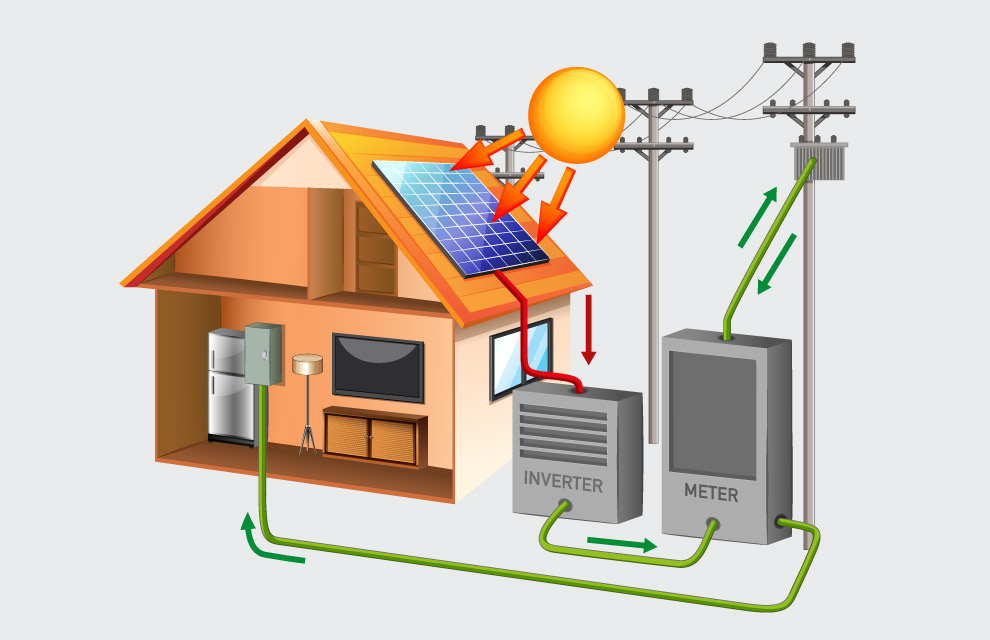
How Does Net Metering Work in Pakistan?
In Pakistan, net metering allows consumers to generate solar power for personal use and feed excess electricity into the national grid, with two options for compensation: payment for the surplus energy or reduced utility bills. Implemented in September 2015, NEPRA’s net metering laws enable Distribution Companies (DISCOs) to buy excess units of energy generated by users and net them off against units used from the grid. This makes net metering accessible to any national grid user with a three-phase connection for small-scale renewable energy projects ranging from 1kW to 1MW.
With net metering, solar energy becomes the primary power source, resulting in savings and reduced carbon footprint. During the day, a rooftop solar system may produce more energy than is consumed. However, net metering ensures access to electricity during periods of low solar generation or at night.
The objectives of net metering in Pakistan are to promote renewable energy use and to provide utilities and the grid with cost-effective solar power systems for homes, reducing reliance on other energy sources. Solar energy is especially useful during summer months when electricity is typically the most expensive.
How Do Electricity Bills Work with Net Metering?
Most homes produce excess electricity during the summer months, while they use more electricity from the grid during winter. However, utilities do not provide a monthly check for the excess electricity produced as these variations in production are predictable. Instead, customers build up extra credits during the summer months to draw from during the winter months and at night. With the right system design, it is possible to generate enough power to match your total electricity use for a year, even if there is an excess in some months and a deficit in others.
If your solar power system produces more electricity than you consume over a month, you will receive a credit based on the number of kilowatt-hours returned to the grid. However, if you use more electricity than you produce, you must purchase the difference from your utility. In such situations, you will be billed only for the electricity consumed minus any excess electricity generated by your solar panels.
Terminologies and Concepts to Understand for Net Metering
To understand net metering, knowing specific terms and concepts is essential. These are elaborated below:
Peak Hours
Electricity unit costs are higher during specific hours of the day, known as peak hours. They usually occur between 5-10 pm and vary depending on the season.
Off-Peak Hours
These hours make up the entire day, excluding the peak hours. Solar systems generate electricity during off-peak hours, and the electricity cost is lower than during peak hours.
Import Units
Units of electricity are imported from the grid station to meet a household's electricity needs. These units are usually low to zero during off-peak hours as solar panels provide electricity.
Export Units
Units of electricity are exported to the grid by the owner of the solar system. These units are zero during peak hours and nighttime when solar panels are not generating electricity.
Net Billing
Net billing involves calculating the bills separately for peak and off-peak hours and then finding the net bill by subtracting export units from import units.
How to Apply for Net Metering in Pakistan?
To apply for net metering, the applicant must comply with the Distributed Generation (DG) requirements specified by the National Electric Power Regulatory Authority (NEPRA) and submit the application along with the necessary documents to the relevant Distribution Company (DISCO) office. The DISCO will acknowledge the receipt of the application within five working days and inform the applicant if any information or documents are missing.
If the application is found to be lacking detail or paper work, the applicant will be notified and given seven days to provide the missing information or documents. Following receipt of a completed application, the DISCO will conduct a preliminary review to determine if the applicant meets the requirements for interconnection and additional demands. This review will be completed within 20 working days.
Components Required For Net Metering
The installation of a Net Metering system requires certain conditions to be met. These prerequisites are as follows:
Grid Connection
The first and foremost requirement for installing a net metering system is to have a net meter connection to the grid. This implies that the system is only compatible with a grid-tie or hybrid system, not an off-grid one.
Three Phase Meter
The first and foremost requirement for installing a net metering system is to have a net meter connection to the grid. This implies that the system is only compatible with a grid-tie or hybrid system, not an off-grid one.
Suction Load
The suction load should be at most the system capacity. Net metering is available for a solar panel system with a minimum capacity of 3KW. For a 3KW system, the suction load should not be more than 2KW.
Application Review Process: Technical Feasibility
The application review process contains the following steps to allow customers to generate their electricity.
Agreement
If the DISCO finds the applicant qualified to be a DG, the two parties will sign an agreement within ten working days.
Generation License
A copy of the signed agreement will be sent to NEPRA along with the application for a generation license within seven working days after the agreement is signed.
Connection Charge Estimate
Suppose the DISCO determines that modifications or upgrades to the network are necessary. In that case, the applicant will receive a Connection Charge Estimate (CCE) for the suggested interconnection amenity up to the interconnection point, including the meter installation. However, if no modification or upgradation is required, the applicant will not receive a CCE directly after the agreement.
Payment of CCE
The applicant must deposit the CCE payment in the applicable bank and inform the DISCO office in writing. The payment should be made as per the suggested payment plan in the CCE and dispatched by the DISCO within 20 days of being issued.
Interconnection Facility
After the applicant has paid the CCE, the DISCO office will proceed with installing and commissioning the interconnection facility within 30 days of obtaining the generation license confirmation from NEPRA net metering rules.
Fee
The Distributed Generator will be responsible for paying all-inclusive costs related to the interconnection amenities up to the point of interconnection, including the meter installation. Any additional costs incurred by the DISCO, such as improvements to the system, will also be borne by the Distributed Generator. Additionally, the Distributed Generator must pay a one-time fee to NEPRA solar net metering via pay order for the issuance of a generation license, as per the following rates:
Free
0 to 20 kilowatt
Rs. 500
20 to 50 kilowatt
Rs. 1,000
50 to 100 kilowatt
Rs. 5,000
100 to 1,000 kilowatt
Benefits of Net Metering
The Benefits of a net metering solar system gives the following certain benefits/
Reduction in Electricity Bills
Export-enabled solar energy systems can significantly reduce your electricity bills by selling excess energy back to the grid, resulting in a quicker return on investment in solar energy investment.
Contribution to the National Grid
Net-metered solar systems can provide an inexpensive source of green energy for grid managers, resulting in substantial fiscal and forex savings for the government. This allows the government to have mini solar power plants without making any capital investment in power generation infrastructure and without offering any sovereign guarantees.
Encouragement for Investment in the Industry
Net metering adds substantial value to rooftop solar systems, making them more viable with a reduced investment payback period. This drives more investment in the solar business, creating more jobs for engineers, installers, researchers, electricians, and manufacturers.
Additional Financial Credits
Owners of net metering systems can earn extra credits and revenue if they generate more energy than they consume, resulting in financial benefits beyond just reducing electricity bills.
No Need for Battery Storage or Backup Generators
Unlike off-grid PV systems, net metering eliminates the need for expensive battery storage systems and backup generators since the utility grid stores the excess power.
Cost Effective and Low Maintenance
Net metering allows for a simpler and more affordable PV system, as it eliminates the need for additional components such as batteries and generators, resulting in lower maintenance requirements for the system.
Key Considerations for Net Metering
Connection to the Grid Required
Net metering relies on a connection with the utility company, which may not be an option for those entirely off the grid. In such cases, a solar energy battery is necessary to store excess energy.
No Payment Received
It’s a common misconception that net metering pays you for excess energy generated. However, unless a solar energy battery is invested in, grid energy will still occasionally be required. Net metering credits extra power, reducing the need to pay as much for electricity bills.
Conclusion
The number of new net metering licenses granted in Pakistan during the July-September 2021 quarter has risen to almost 4,000, compared to only 2,000 during the same period in 2020. This trend signals a positive step towards a more sustainable and efficient energy system.
Net metering is a valuable policy in Pakistan that has gained popularity among consumers recently. It allows individuals to generate their own solar power for personal consumption and feed excess electricity back into the national grid, providing a reliable source of renewable energy for the country.
With the support of NEPRA and DISCOs, net metering has become an effective means of reducing utility bills and earning extra income by selling excess energy. Furthermore, the availability of cost efficient or free solar energy can help reduce electricity bills during the summer months, when energy consumption typically spikes.
FAQs
Net metering is a billing method that gives solar energy system owners credit for the electricity they produce which adds to the grid. For instance, a residential consumer with a PV system installed on their roof might produce more electricity than their household consumes during daylight hours.
The primary distinction between the two reimbursement schemes lies in the compensation provided for the exported energy. Net metering offers balance at the retail rate, while net billing compensates at a lower supply or wholesale rate.
Net metering in Pakistan permits the installation of on-site Renewable Energy (RE) facilities, such as wind and solar energy systems, with a power capacity not exceeding 1 MW. To be eligible for the net metering program, these facilities must be efficient and installed within the customer’s premises.
The Distribution Company will install a bi-directional meter capable of importing and exporting power. However, DISCO may choose to install two unidirectional meters. One meter will measure the energy purchased from the DISCO, while the other will measure the energy exported to the DISCO.
When NEPRA issues a Generation License, the net metering price for customers is transformed to Distributed Generation (DG), distinguishing them from normal consumers. Small-scale generation is referred to as DG, and users are rewarded for the power they produce to the grid.
As per NEPRA’s Net Metering Tarif and Distributed Generation Regulations 2015, the process of net metering typically takes around 90 days. However, the processing time may be extended if the vendor or consumer fails to fulfill the necessary requirements. Common reasons for such delays may include incomplete documentation, survey discrepancies, and the need for simulation studies, especially if the 30% transformer capacity is exceeded.
The following are the eligibility criteria:
- Connection type: 3 phase
- Consumer categories: Residential, Commercial, Industrial, Bulk, General Services
- Supply voltage level: 400V – 11kV
- Solar PV range: 1kW – 1000kW
- PV maximum limit: 1.5 times the sanctioned load.
Customers in Pakistan with 3-phase connections are eligible to install small-scale Renewable Energy facilities ranging from 1kW to 1MW and utilize net metering.
In Pakistan, the cost of establishing net metering typically varies between Rs. 80,000 and Rs. 120,000, in addition to the cost of the system itself.

